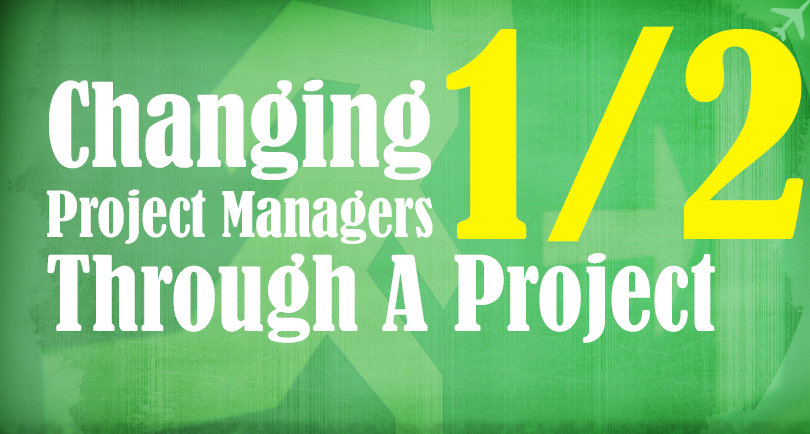
In 2016 alone we had three ongoing projects who were quite successful, but the initial project managers that we were working with left and new product owners were assigned to work with us accordingly.
One of the transitions was even more successful than before, but the other two started out rough, and required a lot of additional communication while building the trust back where it was prior to this moment.
Since maintenance plans and ongoing design and development is a standard procedure with many freelancers and small agencies, there are several things that could be done in order to facilitate the onboarding and reduce the stress levels when working with a new project manager.
Documentation
Often new managers are existing employees of your client, and they have been working on other things before they were pulled off and assigned to your projects. They are not aware of the project specifics and details, and given the timeframes they have their direct manager breathing down their neck, which inevitably leads to rash decisions based on their own experience instead of tailored to the project needs.
Maintaining documentation for a project is a great way to onboard your clients and brief them on the current status of the project, how it has started in the first place, what were the pain points that need attention, and what has been delivered to date.
At DevriX, we use several different tools for tracking changes and updates, timelines, roadmap milestones and other activities in our project management process:
-
- Asana – our project management system where we coordinate requirements and iterate on assignments with our team, and our customers
- Google Apps – a compilation of tools that we use for documentation (Google Docs), feature requirements (Google Spreadsheets), email, calendar, and others
- HipChat – our go-to communication system for internal interactions and nailing down requirements before finalizing them in a formal document
While you are fully aware of the current state of your work and the client needs, new project managers come with their own perspective, work process, and priorities, and you need to bring them as close as possible to the specific needs of the current project. Don’t review components that are already done and have been confirmed, and point them to the remaining work in order to avoid the constant back-and-forth that can and probably will delay the delivery.
Introductory Meetings
 Schedule two or three introductory meetings with your new project manager. Best case scenario (whenever possible), bring in your previous manager to the initial meetings and perform an overview of the work to date.
Schedule two or three introductory meetings with your new project manager. Best case scenario (whenever possible), bring in your previous manager to the initial meetings and perform an overview of the work to date.
Go over your previous sprints in order to indicate what the communication was to date, and how has the team reported and interacted with the previous management. A reference to previous flowcharts, use case diagrams, and feature specifications would help you get closer to the original goal – launching the project and moving to the next set of requirements during your maintenance phase.
Given that your project has been successful so far, your former manager can testify and stress on your reputability.
Even if your previous product owner isn’t available, the time spend on getting to know your manager and explaining the work so far will help them as well, and set the right tone while discussing the future tasks that you need to work together on.
Build the Relationship Again
It’s worth noting that onboarding a new manager is often comparable to bidding for a new project all over. If you haven’t worked together before, you are cautious when sharing details, or unsure of what is acceptable for the person on the other side of the line.
Your new project manager probably doesn’t know why you’re the best person to work on their project. While you can’t completely replicate the whole sales process over, outline your best skills and expertise during the initial meetings and ensure them that their project is safe with you.
Credibility and expertise in a given field or technology are important. Let them know if you have already built similar projects and share some case studies with them. Learn more about their expertise and what they specialize in, and try to find something in common that could be a conversation starter once you give them a call.
Business is usually not a company-to-company collaboration, it’s a person-to-person relationship. Make sure that you get rid of any uncertainties early enough, and rebuild the initial trust that you had with your former manager.
Reviewing and Confirming the Roadmap
 Sometimes project goals don’t necessarily align with the requirements assigned by new management. For example, a technical project manager will likely focus on clean code, design patterns, solid architecture and automated deployments.
Sometimes project goals don’t necessarily align with the requirements assigned by new management. For example, a technical project manager will likely focus on clean code, design patterns, solid architecture and automated deployments.
A creative project manager, on the other hand, may omit some of those requirements while focusing on a clean layout, elegant typography, refining the color scheme toward material design, or require new image rations in line with their understanding of web.
Make sure that all of those concerns are addressed during the initial meetings, and work together in order to find the best way forward. Some of the new requirements may not be possible with your existing roadmap or require additional skills that were not asked for upfront. Discussing the pros and cons will help both of you to decide on the best approach and find out what’s the best solution that would help you deliver within the initial time frame (or redefine the terms accordingly).
Refer to Existing Contracts
In the event of scope creep and change of course, refer to your initial agreement with your former project manager or the CEO of the project. This is a sensitive matter, but it’s important for everyone to be on the same page, and a well prepared contract places the right clauses that should be followed regardless of any variables – including new managers handling a project.
For example, our standard contract is a 10-page document that covers several important points:
-
-
- Reference to the project specification/roadmap
- Planning the milestones
- Definition of the milestones and expected delivery dates
- Communication protocol – available hours, response times for bugs, communication medium (PM system, email, phone) and the like
- Sign-off time frames – we’ve had a lot of projects over the years with clients disappearing for a month or two, not providing required assets, and delaying the project by not reviewing the work sent for approval
- Payment terms – including upfront payments and payment dates for milestones
-
You can add a specific clause that focuses on changing managers half way through a project, and what should happen in that case as well.
While you can be tolerant to certain changes or minor delays, it’s your strongest asset toward more aggressive new managers that try to completely rewrite the project specification while deadline is approaching. You can politely point them to the initial legal agreement and stress on the fact that going live is of utmost importance. Working closely toward the project launch would help out with potential push back for things that have already been agreed on.
Find the Right Tone
People are different, and project managers are just regular folks with a lot of responsibilities. Therefore you may need to redefine the tone of communication given the temperament and communication style of your new manager.
As an example, we’ve been working for a year and a half with a large online magazine with 4 managers coordinating different aspects of the project. One of the managers rarely describes requirements with more than 10 words in a sentence, while the second one enjoys writing detailed briefs with use cases, business requirements and technical challenges. Some are easy going, while others are more conservative. Some are tech-verse, while others are not familiar with tools that are available out of the box.
Finding the right tone for each manager is crucial, and it will only help you understand requirements clearly and provide deliverables as they’re used to receive them.
Redefine the Communication Protocol
Another important detail is finding the right channel for communication.
If you are used to exchanging emails with your former manager, it’s possible that your new project lead is traveling all the time, attending trade shows or business meetings, and rarely has the time to browse his emails and reply in a timely manner.
Discuss that with your new manager and find out what’s the easiest way to send your work for review, as well as receiving feedback or additional requirements.
If you are using a project management system and your client insists on email or using another tool, consider integrating both mediums together. zapier.com is another service that connects apps, and so is ifttt.com . Many project management systems allow for connecting other tools and feeding data into your project, regardless of whether it’s posted in another system, or sent via email.
Stress on the Existing Know How
There is one specific competitive advantage that you have when starting with a new project manager – your know-how on the project. Your expertise so far has been invaluable, and you may have access to third-parties or systems in use for the project that your new manager doesn’t have – or know about.
For example, one of our new managers for a project has started just a couple of weeks ago. We have a planned migration next week, and there are a lot of important details that our new manager isn’t aware of. I had several calls with her and walked her through everything we’ve done so far, all of the systems that we are using, all sites that we have worked on and a checklist that we need to follow during the migration.
She wasn’t aware of some of the subsites that we’ve built for our client, or how many servers and hosting vendors we were using. We have led the communication and assured her that we will be there, streamlining the process and navigating the migration based on our existing experience and know-how of the project.
Our new manager was relieved and extremely satisfied with what we’ve delivered, and the calmness of mind was important for us to prepare everything for the new host, handing over the details and explaining the specifics of the projects.
—–
Working with a new manager should not be a deal breaker for your business, but it may very well be if you don’t approach it with style.
Have you worked on a project when a new manager is onboarded in the middle of the development phase? How have you handled the communication and onboarding yourself?
 Mario Peshev is the owner and WordPress Architect at DevriX, a premium agency building WordPress-based SaaS and SME web solutions. In addition to 10+ years of software engineering experience, he has been consulting businesses and training courses for companies and organizations such as VMware, CERN, Saudi Aramco, Software AG.
Mario Peshev is the owner and WordPress Architect at DevriX, a premium agency building WordPress-based SaaS and SME web solutions. In addition to 10+ years of software engineering experience, he has been consulting businesses and training courses for companies and organizations such as VMware, CERN, Saudi Aramco, Software AG.
At DevriX Mario is responsible for the architecture and infrastructure of SaaS projects, frameworks and the technical backbone of their customers. He is a regular WordCamp speaker and a contributes to different Open Source products, including the WordPress Core.
[ personal blog: http://devwp.eu/ ]
[ DevriX website: http://devrix.com/ ]





